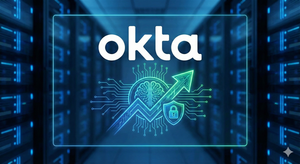—Number of supercomputers powered by AMD EPYC processors and AMD Instinct accelerators increases 29 percent YOY in latest Top500 list—
—Seven of Top 10 in Green500 List Are Powered by AMD Processors —
HAMBURG, Germany, May 23, 2023 (GLOBE NEWSWIRE) -- Today, AMD (NASDAQ: AMD) showcased its high performance computing (HPC) leadership at ISC High Performance 2023 and celebrated, along with key partners, its first year of breaking the exascale barrier. AMD EPYC™ processors and AMD Instinct™ accelerators continue to be the solutions of choice behind many of the most innovative, green and powerful supercomputers in the world, powering 121 supercomputers on the latest Top500 list.
“AMD’s mission in high-performance computing is to enable our customers to tackle the world’s most important challenges,” said Forrest Norrod, executive vice president and general manager, Data Center Solutions Business Group, AMD. “Our industry partners and the global HPC community continue to leverage the performance and efficiency of AMD EPYC processors and Instinct accelerators to advance their groundbreaking work and scientific discoveries.”
AMD Powered Frontier Moves into Full User Operations
The Frontier supercomputer at Oak Ridge National Laboratory, powered by AMD EPYC processors and AMD Instinct accelerators, remains the fastest computer in the world - for the third list in a row. Frontier’s performance increased to 1.194 exaflops, adding 92 petaflops of performance since the November 2022 ranking. The additional 92 petaflops would place eighth on the latest Top500 list. As well, Frontier still remains one of the most energy efficient systems in the world. The Frontier Test and Development System is number two on the Green500 with the full system placing sixth.
This year marks the one-year anniversary of the Frontier officially breaking the exascale barrier for the first time, a feat that remains unmatched. Since then, Frontier entered full user operations and is now supporting users from numerous scientific disciplines. A sample of studies currently using the power of the Frontier supercomputer include:
- Cancer Distributed Learning Environment (CANDLE) which seeks to develop predictive simulations that could help identify and streamline trials for promising cancer treatments, reducing years of lengthy, expensive clinical studies.
- WarpX which looks to simulate smaller, more versatile plasma-based particle accelerators and enable scientists to design particle accelerators for everything from radiation therapy to making semiconductor chips. The team’s work won the 2022 Gordon Bell Prize, which recognizes outstanding achievement in high-performance computing.
- ExaSky which plans to expand the size, scope and accuracy of simulations for complex cosmological phenomena such as dark matter to uncover new insights into the dynamics of the universe.
"WarpX is a first-of-its-kind application that enables 3D simulations of laser-plasma physics. As the team worked on the application as part of the DOE Exascale Computing Project, we knew that it needed to be optimized from the get-go to run on the world’s fastest supercomputer, Frontier,” said Axel Huebl, lead software architect of WarpX at Berkeley Lab. “What made our jobs easy was the fact that the GPU kernels that support the AMD Instinct accelerators and the ROCm open software platform are written in modern C++ with a fully open software stack. This and close iteration on early software and hardware previews gave the WarpX team the confidence and ease to get up and running quickly on Frontier, with fantastic results, that ultimately helped us win the Gordon Bell prize.”
Driving a Robust HPC and AI Ecosystem
AMD is also providing the hardware and software portfolio needed to meet the rapidly growing demand for AI applications within the HPC industry.
For hardware, the AMD Instinct MI250X and AMD EPYC processors take the top two spots in the latest HPL-MxP mixed-precision benchmark, which highlights the convergence of HPC and AI workloads, with the Frontier and LUMI systems. Frontier posted a score of 9.95 exaflops of mixed precision performance, adding two exaflops to its score from the previous list. While Lumi posted a score of 2.2 exaflops in the HPL-MxP benchmark.
Beyond hardware, AMD works with the HPC and AI community to drive the next wave of innovation and support new applications through open software. The AMD ROCm™ open software platform is utilized across multiple large scale HPC systems and has demonstrated stability, robustness and use at this massive scale. ROCm support of large AI models is also rapidly expanding on industry-leading TensorFlow and PyTorch frameworks to help users accelerate AI workloads on AMD Instinct hardware.
For example, the LUMI Supercomputer at CSC Finland is being used to train and power a GPT-3 large language model (LLM) with 13 billion parameters based entirely on Finnish. As well, LUMI is also being used by the Allen Institute for AI to train a new LLM for scientific discovery called Open Language Model (OLMo). OLMo is a uniquely open language model intended to benefit the research community by providing access and education around all aspects of model creation.
Accelerating Adoption of AMD-Processor Powered Systems
AMD demonstrated new collaborations that are advancing what’s possible for solving the world’s most complex problems. Systems leveraging AMD products include:
- A new supercomputer from Atos for the Max Planck Society powered by 4th Gen AMD EPYC processors and AMD Instinct MI300 accelerators for research around astrophysics, life science research, materials research, plasma physics and AI.
- The Adastra system, one of the fastest and greenest in Europe, managed by GENCI and housed at CINES was commissioned, installed and is now available to French and European researchers.
- LUMI, one of the fastest and most energy efficient supercomputers in the world. Leveraging AMD EPYC and AMD Instinct processors, LUMI is being used to power new research around climate change and cancer.
- A new supercomputer launched in April 2023 from Oak Ridge National Laboratory (ORNL) and the U.S. National Oceanic and Atmospheric Administration dedicated to climate science research.
- Nautilus, a new supercomputer from the U.S. Navy DoD Supercomputing Resource Center will support development of weather and ocean products is powered by AMD EPYC CPUs.
Enabling More Energy Efficient Computing
In HPC, energy efficiency is a top priority for the industry to meet sustainability commitments and enable the next generation of supercomputers. AMD is driving innovation and setting new industry standards around energy efficiency. On the latest Green500 list, AMD powers seven of the top 10 systems on the including spots two through seven with AMD EPYC CPUs and AMD Instinct Accelerators.
A highlight of energy efficiency is the AMD powered LUMI supercomputer which is the both the fastest supercomputer in Europe and one of the most efficient. LUMI also takes this the next step by running on 100 percent carbon neutral hydroelectric power and capturing waste heat to power the surrounding city.
Visit the AMD booth #C315 at ISC 2023 to learn more about AMD solutions for HPC and speak with AMD experts.
Supporting Resources
- Find more AMD HPC & AI information and customer testimonials on the AMD HPC Hub
- Learn more about AMD EPYC Processors and AMD Instinct Accelerators
- Follow AMD on Twitter
- Connect with AMD on LinkedIn
About AMD
For more than 50 years AMD has driven innovation in high-performance computing, graphics and visualization technologies. Billions of people, leading Fortune 500 businesses and cutting-edge scientific research institutions around the world rely on AMD technology daily to improve how they live, work and play. AMD employees are focused on building leadership high-performance and adaptive products that push the boundaries of what is possible. For more information about how AMD is enabling today and inspiring tomorrow, visit the AMD (NASDAQ: AMD) website, blog, LinkedIn and Twitter pages.
AMD, the AMD Arrow logo, EPYC, AMD Instinct, ROCm and combinations thereof are trademarks of Advanced Micro Devices, Inc. Other names are for informational purposes only and may be trademarks of their respective owners.
CAUTIONARY STATEMENT
This press release contains forward-looking statements concerning Advanced Micro Devices, Inc. (AMD) such as the features, functionality, performance, availability, timing and expected benefits of AMD products and technology, which are made pursuant to the Safe Harbor provisions of the Private Securities Litigation Reform Act of 1995. Forward-looking statements are commonly identified by words such as "would," "may," "expects," "believes," "plans," "intends," "projects" and other terms with similar meaning. Investors are cautioned that the forward-looking statements in this press release are based on current beliefs, assumptions and expectations, speak only as of the date of this press release and involve risks and uncertainties that could cause actual results to differ materially from current expectations. Such statements are subject to certain known and unknown risks and uncertainties, many of which are difficult to predict and generally beyond AMD's control, that could cause actual results and other future events to differ materially from those expressed in, or implied or projected by, the forward-looking information and statements. Material factors that could cause actual results to differ materially from current expectations include, without limitation, the following: Intel Corporation’s dominance of the microprocessor market and its aggressive business practices; global economic uncertainty; cyclical nature of the semiconductor industry; market conditions of the industries in which AMD products are sold; loss of a significant customer; impact of the COVID-19 pandemic on AMD’s business, financial condition and results of operations; competitive markets in which AMD’s products are sold; quarterly and seasonal sales patterns; AMD's ability to adequately protect its technology or other intellectual property; unfavorable currency exchange rate fluctuations; ability of third party manufacturers to manufacture AMD's products on a timely basis in sufficient quantities and using competitive technologies; availability of essential equipment, materials, substrates or manufacturing processes; ability to achieve expected manufacturing yields for AMD’s products; AMD's ability to introduce products on a timely basis with expected features and performance levels; AMD's ability to generate revenue from its semi-custom SoC products; potential security vulnerabilities; potential security incidents including IT outages, data loss, data breaches and cyber-attacks; potential difficulties in upgrading and operating AMD’s new enterprise resource planning system; uncertainties involving the ordering and shipment of AMD’s products; AMD’s reliance on third-party intellectual property to design and introduce new products in a timely manner; AMD's reliance on third-party companies for design, manufacture and supply of motherboards, software and other computer platform components; AMD's reliance on Microsoft and other software vendors' support to design and develop software to run on AMD’s products; AMD’s reliance on third-party distributors and add-in-board partners; impact of modification or interruption of AMD’s internal business processes and information systems; compatibility of AMD’s products with some or all industry-standard software and hardware; costs related to defective products; efficiency of AMD's supply chain; AMD's ability to rely on third party supply-chain logistics functions; AMD’s ability to effectively control sales of its products on the gray market; impact of government actions and regulations such as export administration regulations, tariffs and trade protection measures; AMD’s ability to realize its deferred tax assets; potential tax liabilities; current and future claims and litigation; impact of environmental laws, conflict minerals-related provisions and other laws or regulations; impact of acquisitions, joint ventures and/or investments on AMD’s business and AMD’s ability to integrate acquired businesses; impact of any impairment of the combined company’s assets on the combined company’s financial position and results of operation; restrictions imposed by agreements governing AMD’s notes, the guarantees of Xilinx’s notes and the revolving credit facility; AMD's indebtedness; AMD's ability to generate sufficient cash to meet its working capital requirements or generate sufficient revenue and operating cash flow to make all of its planned R&D or strategic investments; political, legal, economic risks and natural disasters; future impairments of goodwill and technology license purchases; AMD’s ability to attract and retain qualified personnel; AMD’s stock price volatility; and worldwide political conditions. Investors are urged to review in detail the risks and uncertainties in AMD’s Securities and Exchange Commission filings, including but not limited to AMD’s most recent reports on Forms 10-K and 10-Q.

Contact: Aaron Grabein AMD Communications (512) 602-8950 Aaron.grabein@amd.com Suresh Bhaskaran AMD Investor Relations (408) 749-2845 Suresh.Bhaskaran@amd.com







